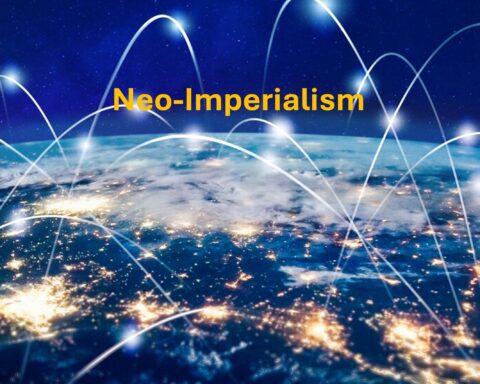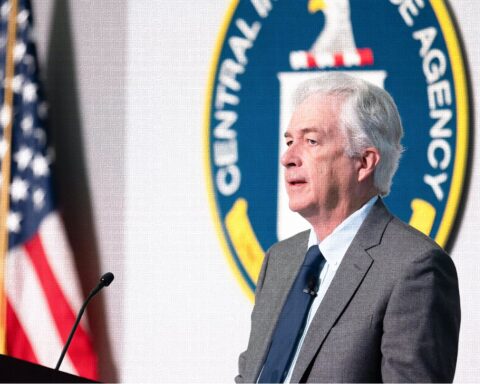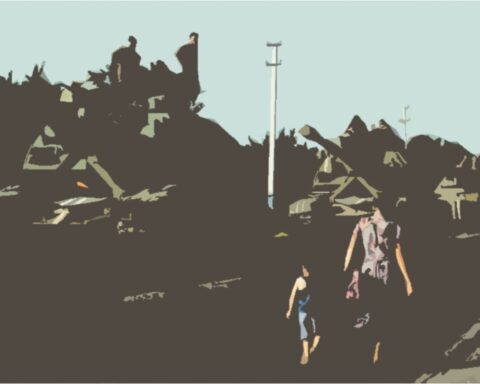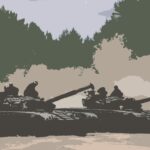We classify wars into generations. Looking at the wars that have occurred, we can talk about a new method of warfare aimed at achieving results by utilizing warfare tactics from every class. Perhaps we will call this “fifth-generation” warfare. Nevertheless, we may still need to look at all of this from the perspective of “real war.” When you combine fifth-generation with real war, the result is Multi-dimensional Warfare.
THE DEFINITION OF REAL WAR
For a war to occur, a country or a group of countries (an alliance) must attack with its military forces under one flag for purposes such as invading the territory of the side declared as an enemy, displacing its people, annexing it, seizing its resources, or imposing certain political conditions, or it must defend itself (legitimate defense) against such attacks. For a “real war” to take place, there must be a defined enemy, aggressor, major violations endangering humanity, violations of rights on a country and community level, military forces, and legitimacy.
Countries may identify many actual behaviors that could lead to war. However, identified actual reasons may not be sufficient to start a war; in this case, political will is required for war. Political will can initiate or accept war in the form of decisions by parliaments or legislation to enact laws.
No one wants to enter a war that they are destined to lose. Perhaps they may face certain problems due to their enemies. They can either resolve these problems through diplomacy or tolerate them. Nevertheless, they may accept the war when the most favorable conditions are met for themselves.
The reality of the ongoing overt war is certain. Therefore, countries accepting the war can engage in wars of the types we can call second, third, or fourth generation wars with their own strengths, capacities, and accumulations.
FIGHT AGAINST TERRORISM
Following the September 11, 2001 attacks, a practice emerged to declare war against terrorism and to maintain military presence in certain countries as part of the fight against terrorism. After this period, there has been a clear shift towards employing multiple methods of fourth-generation warfare. Those who consider combating terrorism as “real war” and those who do not have diverged. On one side, there are those who declare terrorists as enemies and engage in war as a country; on the other side, there are those who prioritize combating terrorism at the level of conflict while maintaining peace conditions.
Today, given the existence of various forms of conflict such as Proxy War, Hybrid War, Cyber Warfare, Asymmetric Warfare, and others in the wars against terrorism, we are progressing towards witnessing fourth or even fifth-generation wars as a result.
CONTACT-BASED REAL WAR
There shouldn’t be much difference between “real war” and “contactless war.” Because the conditions for contact are always ready; there should be a structure that exerts all kinds of power in a war atmosphere or nearby. This aspect is important in terms of testing the endurance (will) power of war.
I need to express real war in another way as well. It could be asked as follows: Isn’t every kind of coercion exerted on the adversary during peacetime? All kinds of pressure are applied to the opposing side during peace and tension times. It is possible to create opportunities for attack and aggression without declaring, hoisting a flag, or mobilizing official military forces; all of these are realized in a multi-dimensional manner with the full potential of national power. Today’s methods and opportunities allow for all of this. Forms of conflict such as Hybrid Warfare, Full Spectrum Warfare, Intelligence Warfare, Proxy Warfare, Asymmetric Warfare, can be applied directly or indirectly, under conditions of peace and tension. So, aren’t we in a great struggle environment where testing occurs in every dimension, constant conflict, challenging conditions, struggle for influence, and armament? New understandings enable us to compete with these.
Real war involves putting the official soldiers of countries face to face, hoisting the national flag, initiating territorial occupation. Russia did this to Ukraine on February 24, 2022, with armed forces leading and all the state’s power behind, the invasion began.
Israel called the Hamas-Israel conflict a war. It declared it as a real war. Some experts described the attack on October 7, 2023, as a form of conflict. The conditions for real war are clear; borders disappear.
Was the war in Gaza only related to Hamas, or was it related to the Middle East in a way that included areas where forces supported by Iran extended? Iran-backed elements in Iraq, Syria, Lebanon, Yemen were already at the center of the conflict. The US also prevented unilateral movements of Russian forces in Syria. The US pressured the progress of China’s Belt and Road Initiative. With the locations of US military units, almost every country in the Middle East has become a part of this war. Considering the coalition formed for the Guardians of Refah Operation in the Red Sea against Houthi, more than 20 countries have entered this war to varying degrees. Is this a war or an operation? The US and the UK are conducting this war with a significant force formation. Looking at the process that began with October 7 in its entirety, we need to call this chaos a new type of war.
So, let’s look again at what the difference is. Until real war turns into a permanent ceasefire agreement, the rules of war, that is, all its merciless forms, come into play. Although there are laws of war, the goal in such a situation is to “destroy the enemy.” The definition of the enemy is not only the soldier but also those who support the soldier.
CLASSIFICATION ASPECT OF REAL WAR
We classify wars from a polemological perspective. Currently, there are “fourth-generation” wars. In my opinion, it is possible to indicate that we are in a transition phase to “fifth-generation” wars. Some experts say “new generation” wars, but I think they are waiting for some criteria to classify them. This is one perspective, but if I were to write from another perspective, the situation is very clear; the term “real war” encompasses all those mentioned and includes many unclassified topics.
Real war is experienced by nations in their history, included in their culture, familiar with their geography and the world, knowing how to construct a battlefield and frontlines, knowing warfare weapons and vehicles, even having production infrastructure, pursuing innovations, having strong intelligence infrastructure, and belonging to every kind of state apparatus, method, and style concerning the welfare of the country, science and technology, business world. For example, if we look at the period after the 19th century, nations such as Turks, British, Americans, Russians, Japanese, Germans, French, Italians experienced real war and deeply learned what happened in war.
The Ukraine-Russia war began, a short time passed, Russia showed weaknesses, many experts looked at these and were deceived. The Russians, who know real war, would not easily give up, even if they lost territories as large as today’s Germany, they would continue the war. For example, in February 2022, Russia entered Ukraine, I also explained that there was a flaw in the plan, not adhering to the principles of war, there were logistical, training, and command-control issues, I said. But what was done? In the winter months of 2023, trenches were built in the Dnieper region just like in the First World War, over vast distances. However, this was a “second-generation” war method, in a war where rockets seen in “fourth-generation” wars were used, it changed the combat effectiveness and situation superiority. Moreover, Russia knew how to use time in war. It quickly realized that the duration of the war needed to be extended. After all, Ukraine was continuing its war with military support from the Western world; if Russia slowed down the pace of the war, there could be differences in the thoughts of supporting countries.
In real war, all kinds of conflicts, propaganda, pressure, attrition, deception are made. Being able to do these and succeed requires great power. In fact, for some of these, it is necessary to work and prepare long in advance. For example, if inciting internal rebellions, uprisings on some fronts is going to be considered, the efforts that will influence here must be made long beforehand. The enemy or potential enemy must be constantly monitored, listened to. Who is doing what and preparing for what, they should be able to follow these. In the example I gave, Russia’s target is Ukraine, naturally, it is being monitored. But this is not enough. Because supporters are also among the main elements of this war, they must also be monitored. So, how large is the geography to be monitored in this respect? All of NATO, Europe, the Black Sea, even Japan. Looking at it from the perspective of influence area against the US, Africa, the Middle East, Asia… In this case, Russia’s infrastructure, capacity should be at a level where it can make all these monitoring, create an advantageous situation for itself from these places during the war. In summary, although Russia’s hot front may be within Ukraine, to win, it must have a capacity on a global scale and have confidence in this regard.
When looking at the other side of this example, concerning the US, NATO, Europe, etc., they must have a capacity on a global scale, and they should be able to effectively deal with every type of war. Real war encompasses such a mutual scope. Although major powers do not put their soldiers face to face, they must be ready for a world war at any moment. Today, if the US and Russia were to confront each other, it would already be a world war, wouldn’t it? Moreover, in the form of a real world war. Everywhere in the world, with every aspect of war…
CONCLUSION
My main argument regarding real war is as follows: Today, wars can be waged according to the structure of national power, geography, threat, and enemy definition. If it is a real war, all kinds of methods and possibilities can be used. As we move towards the fifth generation of war, the variety of these methods and possibilities increases. The diversity in the methods of war that emerge after adding new ones provides countries with the opportunity to develop a situation and condition in their favor both on the battlefield and on a global scale. Recent wars conducted by both Russia and Israel give us the dimensions of this situation. How does the war in Ukraine create an impact on a global scale beyond its front? How does the war in Gaza create an impact beyond its front? Today, the answers to these questions are evidence of how fifth-generation warfare produces complex and multi-dimensional effects.









